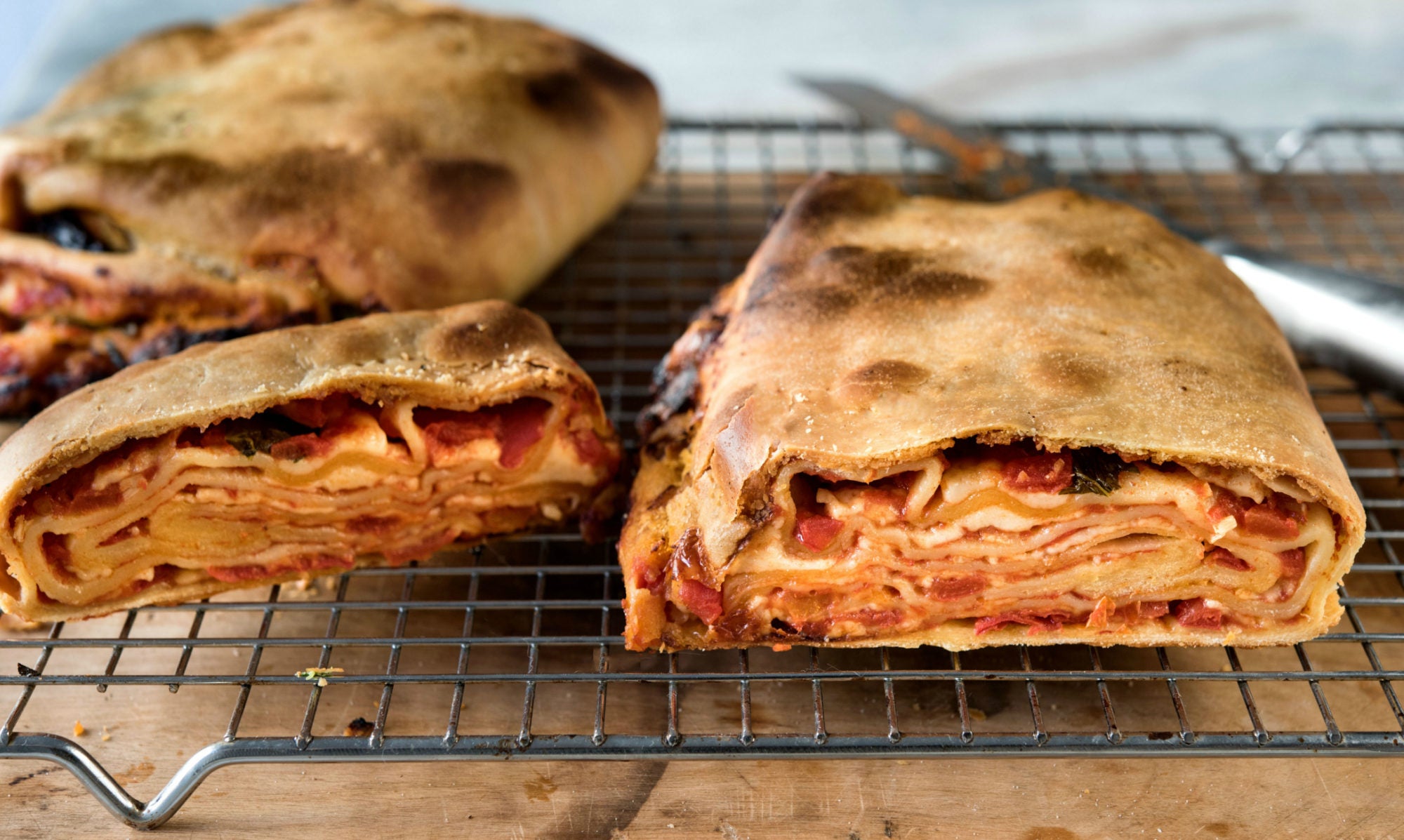
This popular Sicilian street food bakes all of the best, crispiest bits of lasagna into a toasty loaf of bread.
In the Sicilian hilltop town of Ragusa, among the Baroque buildings, churches, and other landmarks, there’s a ubiquitous street food known as scaccia. Layered, sauce-filled squares are sold in bakeries as quick lunches and on-the-go snacks.
Scaccia is perhaps best described as a cross between a calzone and lasagna—a stuffed bread full of thin layers of dough. When scaccia emerges from the oven, the outermost layer is completely crispy, nicely browned, and charred in spots—yet the inner layers have a tender, noodle-like texture to them thanks to the absorption of moisture from the tomato sauce and cheese. So you get the best of both worlds, the slightly burnt (and, according to some, the best) parts of lasagna and the al dente–ness of properly cooked pasta.
The noodle-like consistency is the result of the combination of durum semolina and water. Unlike a thick, chewy calzone dough, or a bread dough—which contains a leavener like yeast—scaccia dough is thin and crispy. Some recipes for scaccia substitute Double 0 flour, a type of soft wheat with a high protein/gluten content, for some of the semolina.
When choosing a filling, your options are endless. There’s the straightforward combination of tomato sauce, garlic, basil, and cheese, and fresh ricotta with onions, sausage, tomatoes. My favorite (so far) is pan-fried eggplant with fresh ricotta, grated Parmesan, and basil. It reminds me of an eggplant Parmesan, but instead of breaded eggplant, the eggplant is encased in layers of “noodles.”
As for baking, a pizza stone is ideal, as it retains heat and, to an extent, mimics a wood-burning oven by absorbing intense heat. As with many Italian dishes and many street foods, scaccia has an inherent rusticity to it. The beauty of this is that when you’re rolling out the dough, you don’t have to be overly concerned if it’s not the perfect shape or size. You want the layers fairly thin, and from there it’s just a matter of layering the fillings, folding, and repeating.
But no matter how it looks when it comes out of the oven, your scaccia will be a delicious carb fest.